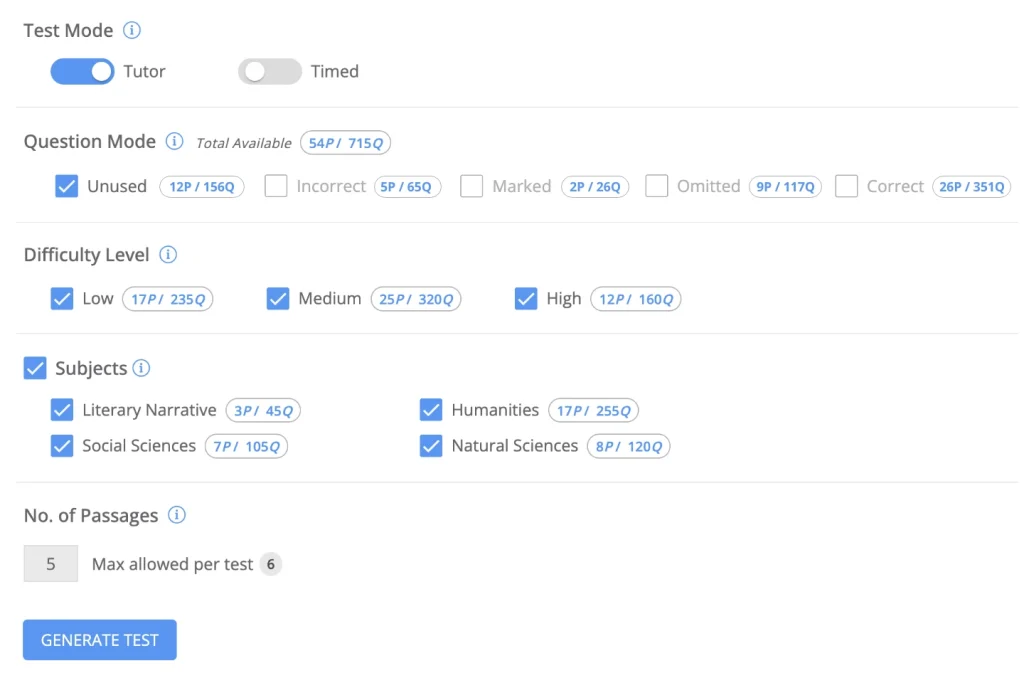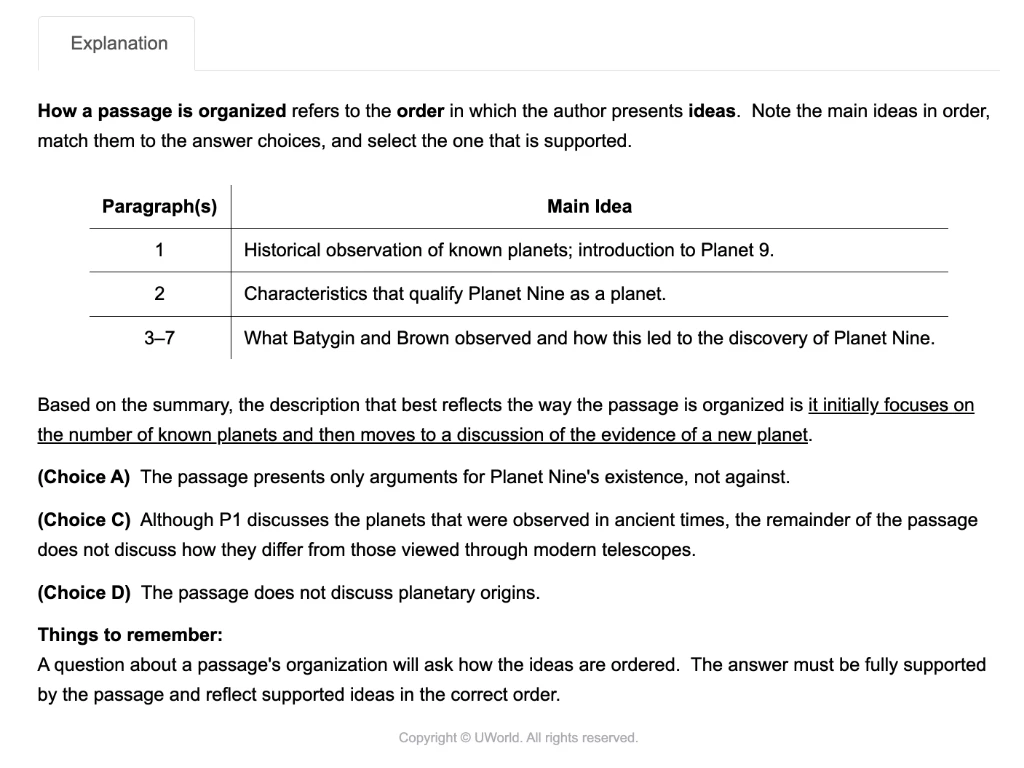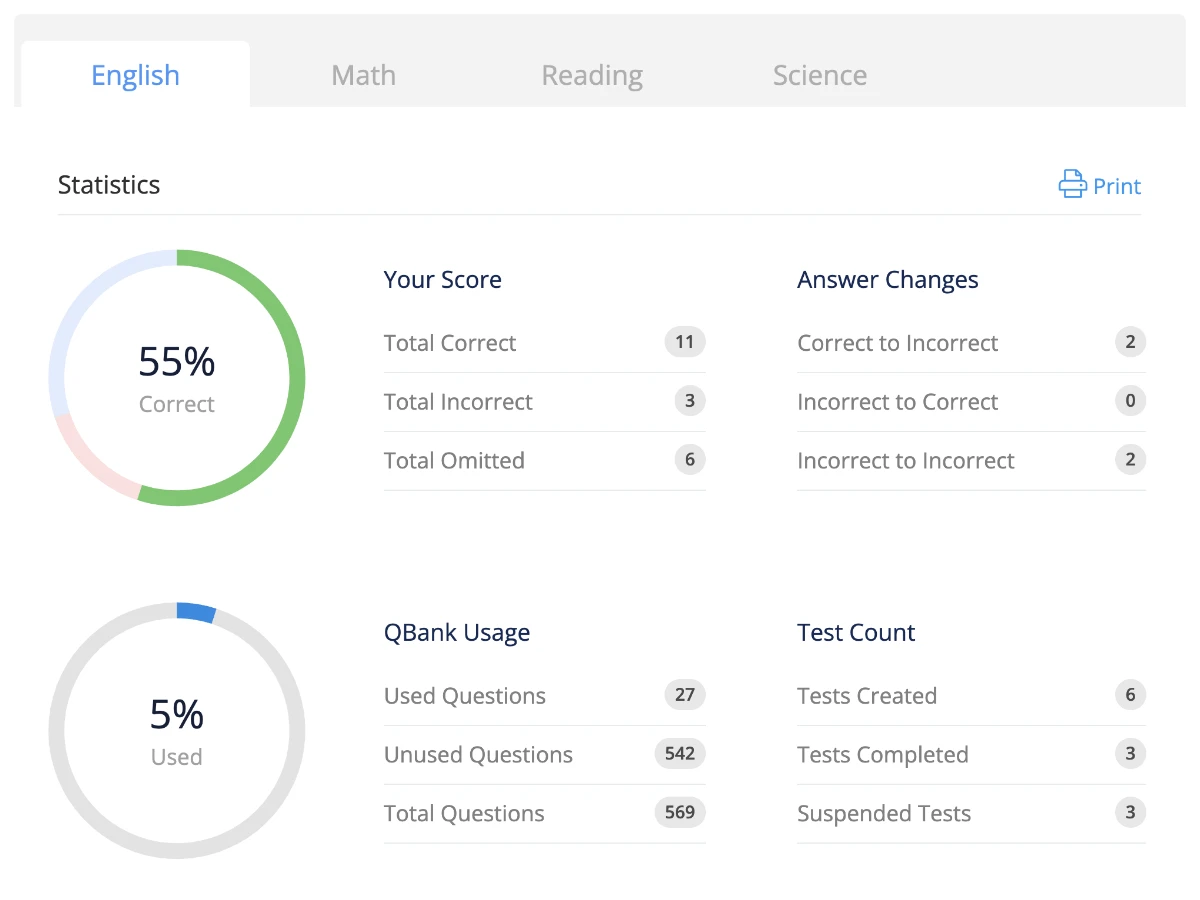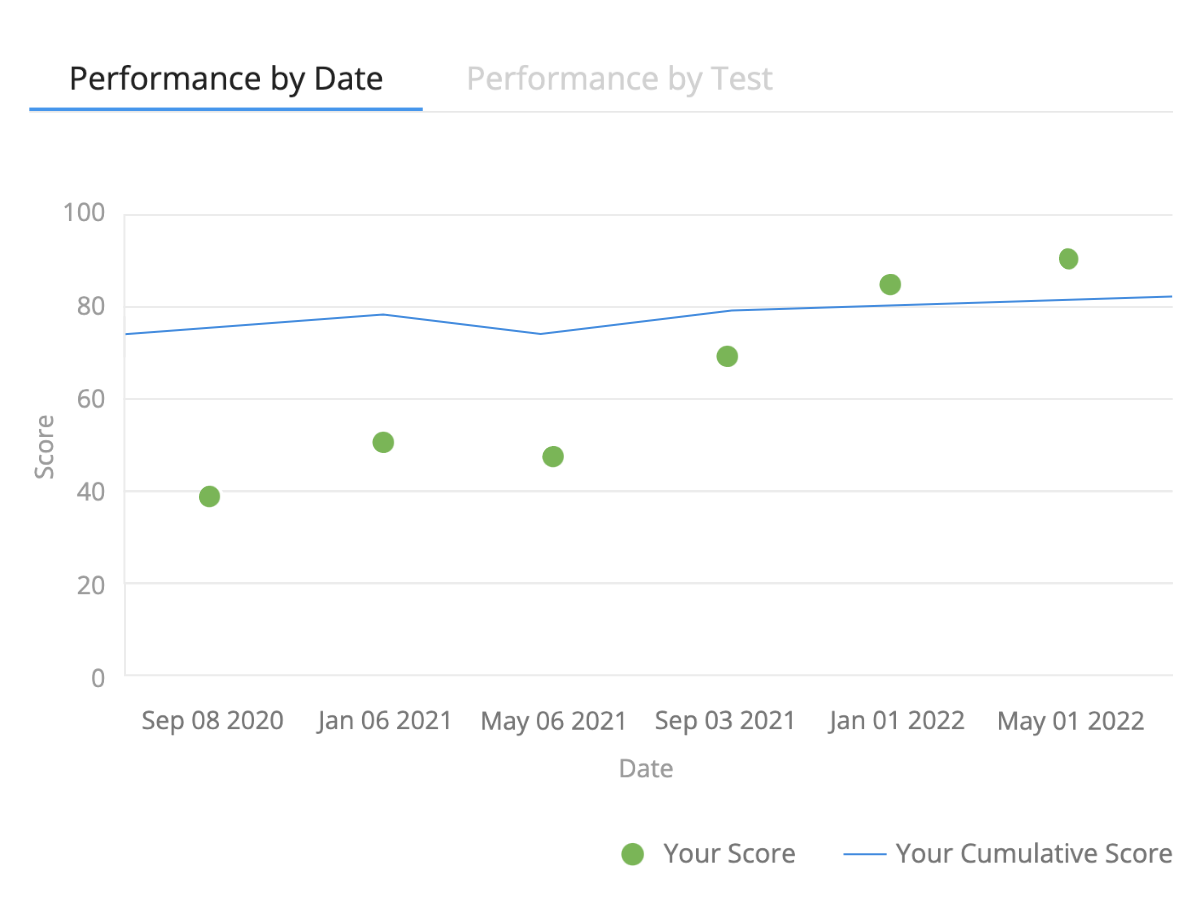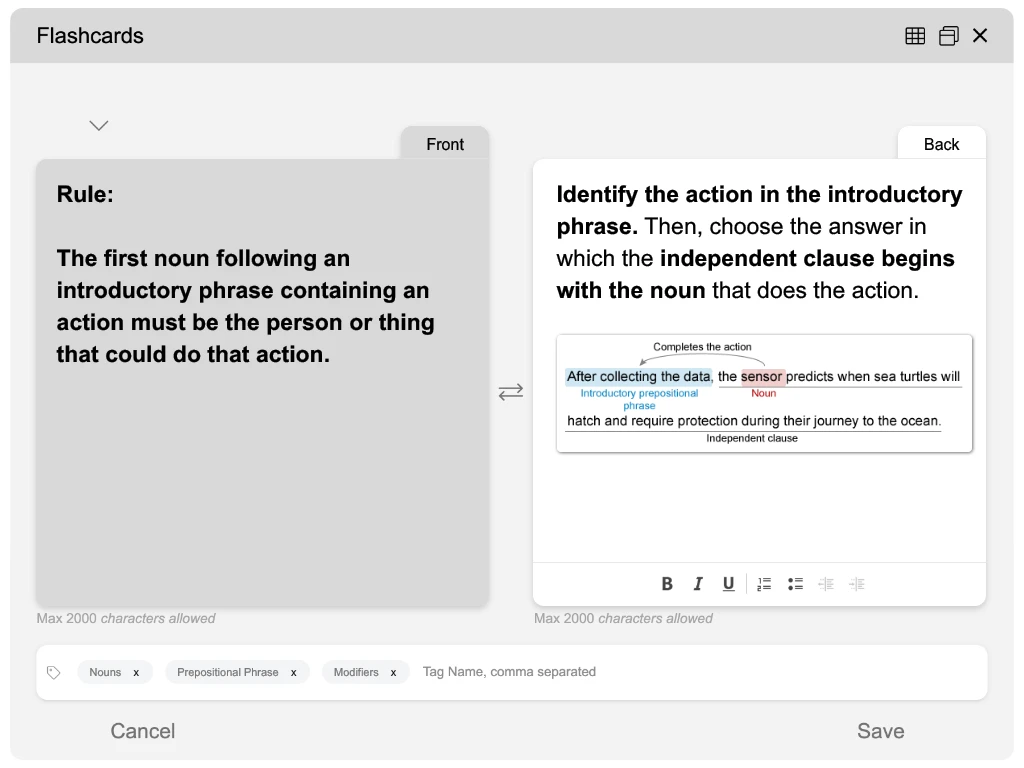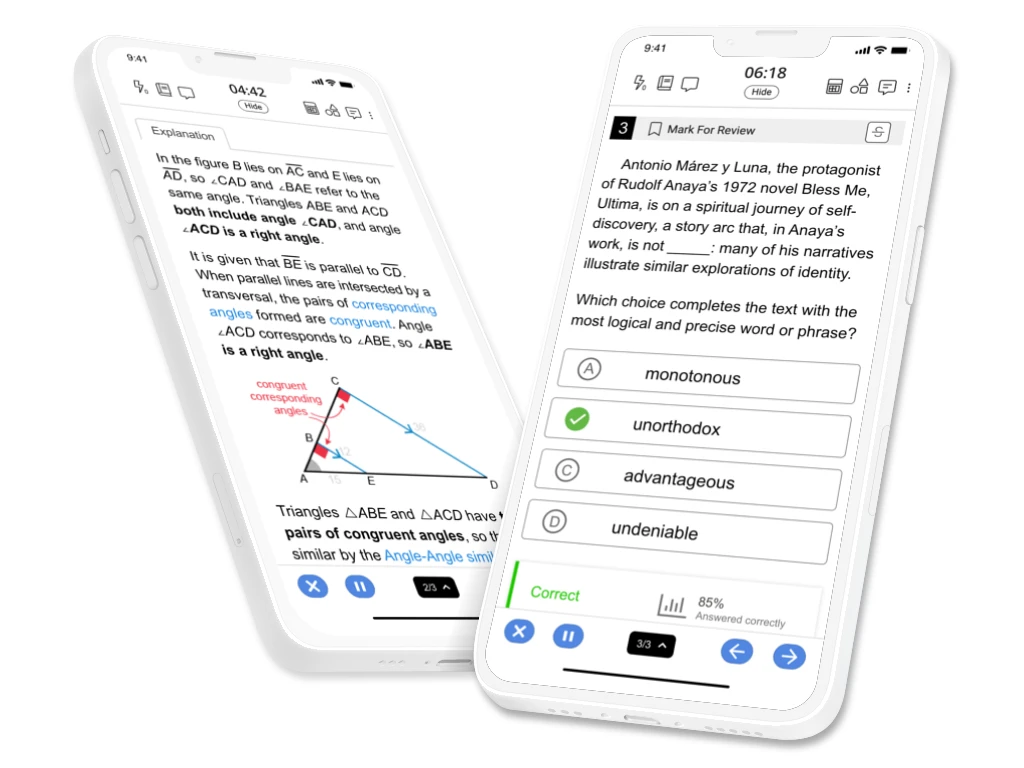ACT® English Grammar Practice and Sample Questions
Free Sample ACT English Questions
Passage
Joshua Tree National Park is extensive, slightly larger than Rhode Island, and named after a tree-like desert plant species. But this area might never have become a monument in 1936 and a bona fide national park in 1994 without the involvement of a woman who tirelessly worked, promoted, and eventually succeeded in convincing the government to protect it.
Civic activist, Minerva Hamilton Hoyt, became interested in cactuses and Joshua trees because of her love for gardening. She even traveled across the country to educate people about these desert plants. In reality, to expand her audience, Hoyt exhibited to other gardeners, some as far away as London. Two years after her first 1928 Garden Club of America show in New York, which was when Hoyt founded the International Desert Conservation League.
Hoyt might have never started her efforts on behalf of Southern California's desert plants had it not been for her growing concern that increased automobile traffic was threatening those plants in that region of that state. In an effort to protect these desert plants, Hoyt crusaded for the creation of Joshua Tree National Park by the state of California throughout the 1930s.
She also persuaded the Mexican government to set aside 10,000 acres for cactus preservation. In fact, in 1931, a species of Mexican cactus was named after Hoyt. Then in 2013, a mountaintop within Joshua Tree was also named after her. Even today the Joshua Tree National Park Association annually honors "notable achievement on behalf of the deserts of California" with its Minerva Hoyt Award, a fitting tribute to the woman who I think deserves to be honored.
Question
Which choice most effectively concludes the sentence and the essay?
| A. NO CHANGE | |
| B. worked so hard to protect these lands. | |
| C. is still influencing how people view deserts today. | |
| D. this state has to thank for her ambitious goals. |
Explanation
Even today the Joshua Tree National Park Association annually honors "notable achievement on behalf of the deserts of California" with it's Minerva Hoyt Award, a fitting tribute to the woman who worked so hard to protect these lands.
The best phrase to conclude a sentence and an essay will logically summarize the essay's main idea. To find the main idea, briefly summarize each paragraph and look for a recurring theme.
- Paragraph 1: The persuasion Hoyt used to convince the government to make a desert area a national park.
- P2: Hoyt's interest in and promotion of desert plants.
- P3: The reason Hoyt wanted to create a national park and what efforts she took to do so.
- P4: The way Hoyt was honored for her hard work.
Because it effectively describes Hoyt's work and motivation, the best phrase to effectively conclude the sentence and the essay is worked so hard to protect these lands.
(Choice A) This answer doesn't summarize what the passage discusses because it's not about why the writer believes Hoyt deserves to be honored but rather her work in creating a national park.
(Choice C) P2 discusses Hoyt's efforts to change the way people view desert plants, but this isn't the main idea of the whole essay, which more broadly discusses her push for a national park to protect desert plants.
(Choice D) P4 discusses how Hoyt was recognized for her ambitious efforts, and this phrase might summarize that idea. However, it doesn't effectively summarize the specific idea of the whole essay—what Hoyt did to protect a desert area.
Things to remember:
To determine the main idea of the passage, summarize each paragraph and then match their common theme with a phrase from one of the answer choices.
Passage
The problem of "fake news"—media outlets adopting sensationalism to the point of fantasy—is nothing new. Although the peddling of public lies for political or financial gain can be found throughout history, the late 19th century is when "yellow journalism" first began.
Why yellow? The reasons are not totally clear. Some sources point to the yellow ink the publications would sometimes use; for example, it more likely stems from the popular Yellow Kid cartoon that first ran in The New York World and The New York Journal.
These days, Joseph Pulitzer is associated with journalism of the highest standards. During his life, his reputation, that is, was very different. Not long after purchasing The New York World in 1884 and increasing circulation by publishing sensationalist stories, he earned the dubious honor of being the pioneer of tabloid journalism. He gained a competitor in the field when William Randolph Hearst, who acquired The New York Journal.
The rivalry reached its height in the lead-up to the Spanish-American War, a conflict that some dubbed "The Journal's War" due to Hearst's influence in promoting anti-Spanish sentiment. Much of the coverage was tainted by unsubstantiated claims, sensationalist propaganda, and outright factual errors. In The Journal when the USS Maine exploded and sank in February of 1898, huge headlines blamed Spain with no evidence at all. The Spanish-American War began later that year.
As we've witnessed recently, the use in the media of the term "fake news" has strayed from describing factually incorrect reporting. It now includes any unflattering news. Although the "yellow journalism" of the 19th century ended as Pulitzer and Hearst became haunted by the consequences of their sensationalist reporting, today's "fake news" has yet to reach its conclusion.
Question
Which choice offers the clearest and most precise information about the potential benefits provided by yellow journalism?
| A. NO CHANGE | |
| B. certain advantages | |
| C. privately held interests | |
| D. the goal of getting ahead |
Explanation
Although the peddling of public lies for political or financial gain can be found throughout history, the late 19th century is when "yellow journalism" first began.
The most clear and precise information gives the most specific details of all the answer choices.
Look for wording that expresses specific benefits of yellow journalism, since that's what's asked for in the question. Gains (profits) would be considered benefits and "political or financial" provide specific details about the types of gains spreading lies provides. Therefore, the answer with the clearest and most precise information is political or financial gain.
(Choice B) The phrase "certain advantages" is clear and concise (brief), but it doesn't give specific details about the specific benefits of yellow journalism.
(Choice C) The phrase "privately held interests" does not make clear whether the "interests" are held by an individual or by many people, nor does it specify any specific benefits that yellow journalism might provide.
(Choice D) "The goal of getting ahead" is too general and does not identify specific benefits provided by yellow journalism.
Things to remember:
Choose the answer that gives the most specific information about what the question asks.
Passage
The problem of "fake news"—media outlets adopting sensationalism to the point of fantasy—is nothing new. Although the peddling of public lies for political or financial gain can be found throughout history, the late 19th century is when "yellow journalism" first began.
Why yellow? The reasons are not totally clear. Some sources point to the yellow ink the publications would sometimes use; for example, it more likely stems from the popular Yellow Kid cartoon that first ran in The New York World and The New York Journal.
These days, Joseph Pulitzer is associated with journalism of the highest standards. During his life, his reputation, that is, was very different. Not long after purchasing The New York World in 1884 and increasing circulation by publishing sensationalist stories, he earned the dubious honor of being the pioneer of tabloid journalism. He gained a competitor in the field when William Randolph Hearst, who acquired The New York Journal.
The rivalry reached its height in the lead-up to the Spanish-American War, a conflict that some dubbed "The Journal's War" due to Hearst's influence in promoting anti-Spanish sentiment. Much of the coverage was tainted by unsubstantiated claims, sensationalist propaganda, and outright factual errors. In The Journal when the USS Maine exploded and sank in February of 1898, huge headlines blamed Spain with no evidence at all. The Spanish-American War began later that year.
As we've witnessed recently, the use in the media of the term "fake news" has strayed from describing factually incorrect reporting. It now includes any unflattering news. Although the "yellow journalism" of the 19th century ended as Pulitzer and Hearst became haunted by the consequences of their sensationalist reporting, today's "fake news" has yet to reach its conclusion.
Question
This question asks about the preceding passage as a whole
Suppose the writer's primary purpose had been to illustrate the influence of "yellow journalism." Would this essay accomplish that purpose?
| A. Yes, because it explains how the practice originated and played a part in world events. | |
| B. Yes, because it provides an overview of how countries have used sensationalist reporting to their advantage. | |
| C. No, because it focuses only on past events without connection to present claims of "yellow journalism." | |
| D. No, because it suggests that "yellow journalism" lacks the ability to have a significant impact. |
Explanation
To determine whether an essay accomplishes a purpose, consider these questions:
-
What kinds of information does the essay give about its topic?
-
This essay explains how "yellow journalism" got its name and makes historical references to it (the Spanish-American War and Mussolini). It also mentions the similarity between "yellow journalism" and "fake news."
-
-
Does the essay do what an answer choice suggests?
-
The essay does explain how the practice of yellow journalism started and influenced events such as the Spanish-American war.
-
Therefore, this essay does accomplish the purpose of illustrating the influence of "yellow journalism" because it explains how the practice originated and played a part in world events.
(Choice B) Although this essay says countries have encountered "yellow journalism," it doesn't provide an overview of how countries have used it to their advantage. In fact, the opposite is true. The essay details how "yellow journalism" led the US to make inaccurate decisions about war.
(Choice C) The author gives information about present claims of "yellow journalism," more commonly called "fake news" today. This essay connects the past to present claims.
(Choice D) This essay does not suggest that "yellow journalism" lacks the ability to have significant impact. In fact, by telling how it led to US involvement in war, the essay suggests that "fake news" has had great influence.
Things to remember:
Consider what the essay says about the topic and choose the answer that represents what the essay does.
Passage
Joshua Tree National Park is extensive, slightly larger than Rhode Island, and named after a tree-like desert plant species. But this area might never have become a monument in 1936 and a bona fide national park in 1994 without the involvement of a woman who tirelessly worked, promoted, and eventually succeeded in convincing the government to protect it.
Civic activist, Minerva Hamilton Hoyt, became interested in cactuses and Joshua trees because of her love for gardening. She even traveled across the country to educate people about these desert plants. In reality, to expand her audience, Hoyt exhibited to other gardeners, some as far away as London. Two years after her first 1928 Garden Club of America show in New York, which was when Hoyt founded the International Desert Conservation League.
Hoyt might have never started her efforts on behalf of Southern California's desert plants had it not been for her growing concern that increased automobile traffic was threatening those plants in that region of that state. In an effort to protect these desert plants, Hoyt crusaded for the creation of Joshua Tree National Park by the state of California throughout the 1930s.
She also persuaded the Mexican government to set aside 10,000 acres for cactus preservation. In fact, in 1931, a species of Mexican cactus was named after Hoyt. Then in 2013, a mountaintop within Joshua Tree was also named after her. Even today the Joshua Tree National Park Association annually honors "notable achievement on behalf of the deserts of California" with its Minerva Hoyt Award, a fitting tribute to the woman who I think deserves to be honored.
Question
Which transition word or phrase is most logical in context?
| A. NO CHANGE | |
| B. All in all, | |
| C. Then, | |
| D. Thus, |
Explanation
She even traveled across the country to educate people about these desert plants. Then, to expand her audience, Hoyt exhibited to other gardeners, some as far away as London.
When the transition begins the sentence, it's connecting ideas between sentences.
Here, the first sentence explains that Hoyt traveled the country to familiarize people with desert plants. The next sentence explains how Hoyt tried "to expand her audience" by doing more exhibitions in distant places like London.
"Then" = "soon after that." Because it connects the idea that Hoyt showed plants in this country and, after that, expanded her audience to at least one other country, Then, is the most logical transition.
(Choice A) In reality = in actual fact. This transition contrasts a false idea with one that's more accurate. (Ex. Theresa believed she could control her feelings, but, in reality, it wasn't that easy.) However, these two sentences don't contain contrasting ideas.
(Choice B) All in all = on the whole. (Ex. I made the honor roll and swim team. All in all, it's been a good year.) This transition indicates that the second sentence is a summary of the first, but the sentence after the transition indicates a new action; it doesn't summarize how Hoyt exhibited plants across the country.
(Choice D) Thus = As a result. (Ex. I don't like spiders. Thus, I don't go into the attic where they live.) Hoyt exhibited across the country to educate people. Taking her show to other countries was not the result of exhibiting in America; going to London was the next step she took.
Things to remember:
The best transitions provide a logical connection between sentences.
Passage
Since the Revolutionary War, the US government has played a role in the health and safety of the nation's food supply. The government's efforts to feed Americans good and frequent meals have had significant impacts on the food chain from farm to factory. legislation came about in 1906 as the result of an experiment that took place at the Bureau of Chemistry after Harvey Washington Wiley became the US Department of Agriculture's chief chemist.
Wiley had focused his career on the subject of food. He objected to certain food additives on moral grounds and approached his work with the zeal of a crusader. Food adulteration was a perpetrated on the American people, he was determined to expose it to justice's harsh light.
Industrial Age foodstuffs were commonly arsenic formaldehyde, sodium benzoate, boric acid, and other substances. These chemicals were added to foods as dyes or preservatives or to mask substandard ingredients and spoilage. Chemical preservatives, Wiley believed, posed the most danger to the consumer, but he would need proof.
Wiley devised an experiment designed to provide evidence that these substances were indeed harmful. He rounded up 12 "young, robust fellows" to volunteer for what he called "the Hygienic Table." Perhaps motivated by the promise of free meals, his collection of medical students and Agriculture Department underlings signed on to eat food laced with increasing amounts of chemical preservatives found American diets. Their motto was "None but the brave dare eat the fare." The experiment surprised Wiley on two the fascination it held for the press—who gleefully dubbed it "The Poison Squad"—and the severity of the illness caused by the adulterants. News of the Poison Squad contributed to the mounting public outcry for protection. In 1906, Wiley and other supporters prevailed, and ultimately the Pure Food and Drug Act was passed.
Question
The writer wants to divide this paragraph into two in order to separate details about how Wiley's experiment was conducted from details about its impact. The best place to begin the new paragraph would be at Point:
| A. A | |
| B. B | |
| C. C | |
| D. D |
Explanation
Wiley devised an experiment designed to provide evidence that these substances were indeed harmful. He rounded up 12 "young, robust fellows" to volunteer for what he called "the Hygienic Table." [A] Perhaps motivated by the promise of free meals, his collection of medical students and Agriculture Department underlings signed on to eat food laced with increasing amounts of chemical preservatives found extensively in American diets. [B] Their motto was "None but the brave dare eat the fare."
[C] The experiment surprised Wiley on two counts; the fascination it held for the press—who gleefully dubbed it "The Poison Squad"—and the severity of the illness caused by the adulterants. [D] News of the Poison Squad contributed to the mounting public outcry for protection. In 1906, Wiley and other mounting supporters prevailed ultimately the Pure Food and Drug Act was passed.The question tells you the paragraph begins with information about how the experiment was conducted and then changes to information about its impact. Scan the paragraph, looking for information about what happened after the experiment. The point where the information changes is where a new paragraph should begin.
After the experiment had been going on for some time, Wiley was "surprised" by two results: the interest it sparked in "the press" and "the severity of the illness" experienced by the boys in the study. The change in the paragraph's information happens at Point C, which is the best place to begin a new paragraph.
(Choice A) There is more information about how the experiment was conducted after Point A (the boys ate "food laced with increasing amounts of chemical preservatives"), so this point is not where the change in information occurs in the paragraph.
(Choice B) The motto of the participants ("None but the brave dare eat the fare") does not signal the start of information about what happened after the experiment. Because the motto belongs with information about what happened during the experiment, this point is not the correct answer choice.
(Choice D) The "mounting public outcry" against food adulterants occurred after the experiment, but this point isn't the first place in the paragraph where a change in topic appears. A new paragraph should begin earlier.
Things to remember:
Choose the first point in the paragraph where a shift in topic occurs to begin a new paragraph.
Get Exam-Ready with ACT Grammar & Punctuation Practice
Unlimited Exam-level Practice
Customized to Your Needs
Understand the Why
Score Free ACT Questions Every Week!
Get ACT exam-ready with weekly exam-like questions sent to your inbox.
Aim for a 36 on ACT English Section with UWorld
“UWorld's question bank can be described in one word: revolutionary. It accurately models the content that you would see on the test and familiarizes you with the test through PRACTICE, not mindless reading of the content. After using UWorld's amazing question bank, I was able to score a 36. It's proven to work and yielded amazingly good results for me!”
- Ravi
Create Unlimited Custom ACT English Practice
What if you could practice the ACT English section as many times as you needed before it actually counted? Now you can.
Build your own custom ACT English sessions from hundreds of exam-style items written by experts. Filter by grammar topic, punctuation rule, custom tag, or even items you’ve missed before to focus where it matters most.
Understand Why an Answer is Right or Wrong
Dive into detailed explanations and illustrated examples that help you grasp tricky grammar and punctuation concepts fast. Highlight key points and save them to custom digital flashcards for easy review anytime. With each session, you’ll improve your recall, strengthen your understanding, and boost your confidence on the ACT English section.
Track Your Progress With Advanced Analytics
Growth starts with insight. Our advanced analytics give you instant feedback on every session, showing exactly where you’re improving and where you need to focus next. You’ll see score predictors that estimate your ACT performance and even compare your progress to your peers—so you’ll always know where you stand and what to study next.
Features: My Notebook & Flashcards
Click, highlight, and instantly save helpful visuals or written notes from your UWorld QBank into your digital My Notebook and Flashcards. Organize everything by topic or custom tag for streamlined review. Best of all, your study tools are always within reach with the UWorld College Prep mobile app—study anywhere, anytime.
We Make the Real Thing Feel Easy
When your study sesseions feel like the real exam, the real exam feels easy. Our ACT English sample questions mirror the authentic format and difficulty, so by test day, confidence comes naturally.
Great ACT English Scores Make Students Happy
The primary reason for me being extremely likely to recommend UWorld to a friend is because it has helped me prepare and achieve a 35 Composite ACT Score!”
The UWorld question bank has allowed me to make great improvements to each of the subjects on the ACT. The question bank is easy to use and the tutoring mode has helped me to make leaps in my test taking ability.”
Before I switched to UWorld, studying for the ACT was extremely frustrating! The countless strategy books in my closet were too overwhelming to begin studying. When I found UWorld, preparing for the exam became quick and easy. I could take mock tests to see my strengths and weaknesses in certain subjects, and learning became fun! I received a better ACT score than I could have imagined!
See more